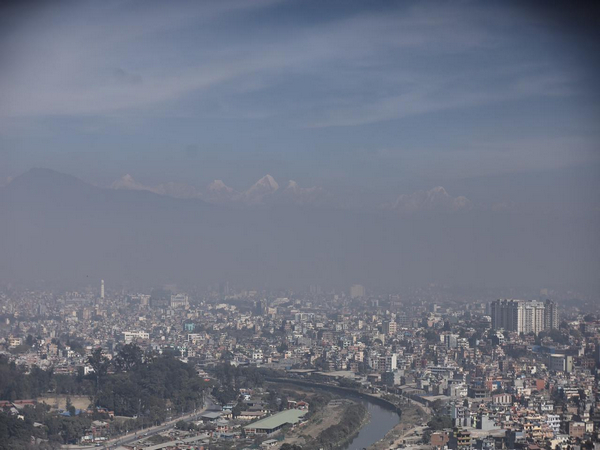Kathmandu ranks top on list of worst AQI cities in world
As per the reading by IQ Air, a Swiss group that collects real-time air-quality data around the globe, the particulate matter pollution (PM2.5) levels of Kathmandu at 8 am (local time) stood at 241 micrograms per cubic metre.

- Country:
- Nepal
Thin layer of polluted haze has shrouded the atmosphere of Kathmandu dipping the Air Quality of the Himalayan nation's capital, making it the city with worst AQI (Air Quality Index) in the world. Since the past few days, Kathmandu has continued to retain its position of most polluted city in the world.
As per the reading by IQ Air, a Swiss group that collects real-time air-quality data around the globe, the particulate matter pollution (PM2.5) levels of Kathmandu at 8 am (local time) stood at 241 micrograms per cubic metre. It further climbed to 258 by 10 am (local time) with the start of office time in the national capital. Air pollution level of the bowl-shaped valley has accelerated further due to the rise in forest fires across the country. On Monday alone, more than 150 incidents of forest fire were recorded in the Himalayan Nation, which has continued to rage across thenation.
PM2.5 refers to particulate matter or solid and liquid droplets in the air that are less than 2.5 micrometres, or 400th of a millimetre, in diameter. As per the United States Environment Protection Agency's air quality index, when air pollutant PM2.5 exceeds 300 mg/m3, the level is considered 'hazardous' for everyone and may prompt emergency condition alerts. When air pollutant PM2.5 reaches 201 to 300 mg/m3, air quality is considered very unhealthy; everyone may experience problems, with sensitive groups experiencing more severe effects.
Speaking to ANI, Bibek Magar, one of the resident of Kathmandu said, "Due to the pollution I have been facing problem in my throat. I feel more itchiness in my throat in comparison to the problem in my eyes. Am feeling roughness in my throat making me feel something has stuck on my throat, there is no significant problem in eye in comparison to throat." Drop in the visibility due to the increased pollution level also impacted the operation of the airport in Kathmandu in early hours of Wednesday as visibility there dropped to 2000 meters.
The bowl-shaped valley which also is one of the densely populated hasn't received precipitation for weeks letting pollutants remain afloat in the atmosphere which has dropped the air quality. Doctors has warned poor air quality causing short- and long-term effects on public health with chances of pneumonia, bronchitis, conjunctivitis, skin allergy, stroke and heart problems, among others, in the short term, and ulcers and cancer of the lungs and intestine, kidney disease and heart problems in the long-run.
Nepal usually witnesses the pollution level surging high in the dry months ranging from March to May, when forest fires are more common. As rain remains off the sky, failing to wash out all the pollutants, the atmosphere gets surrounded by pollution dipping the air quality index. The World Health Organization (WHO) defines air pollution as contamination of an indoor or outdoor environment by any chemical, physical, or biological agent that modifies the natural characteristics of the atmosphere. Common sources of air pollution are household combustion devices, motor vehicles, industrial facilities and forest fires. (ANI)
(This story has not been edited by Devdiscourse staff and is auto-generated from a syndicated feed.)
ALSO READ
Swiss vote to ban swastika in crackdown on extremist symbols
Swiss parliament rejects joining sanctions task force against Russia
FOREX-Rush to Swiss franc and yen calms after Iran plays down Israeli strike
FOREX-Reports of Israeli attack on Iran spark rush to Swiss franc and yen
Swiss environment minister plays down impact of European climate ruling










